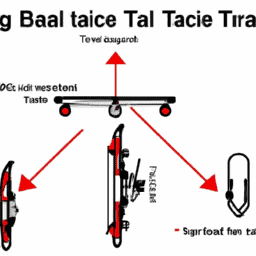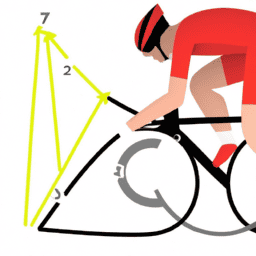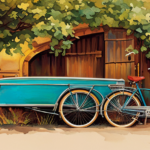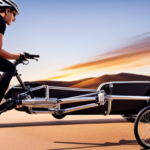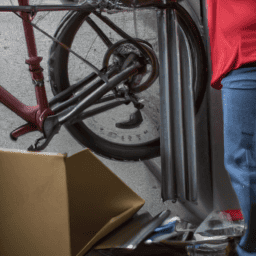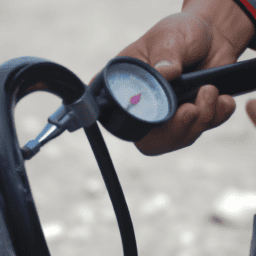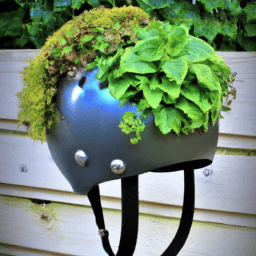Hooking up a bike trailer to your bicycle presents an excellent opportunity to carry your kids, pets, or gear during a relaxing ride. Nonetheless, for those who are new to this, the task can seem daunting if they’ve never attempted it before.
In this article, I will give you step-by-step instructions on how to attach a bike trailer to your bicycle.
Before we get started, it’s important to note that there are different types of bike trailers, each with its own hitch system. Some use a seat post hitch, some use a rear axle hitch, and some use a chainstay hitch. It’s essential to ensure that you have the correct hitch system for your bike trailer and bicycle.
With that said, let’s gather the necessary tools and get started on installing the hitch.
Key Takeaways
- Choosing appropriate tools, such as a wrench, an Allen key, a bike pump, and a hitch, is crucial for attaching the bike trailer to the bicycle.
- The hitch should be properly aligned onto the bike frame’s axle and tightened using a wrench.
- Proper alignment and weight distribution are crucial for a safe ride. Testing the stability and alignment of the trailer is important before hitting the road.
- Different types of bike trailers are available for different needs and preferences, such as cargo trailers designed to carry goods and supplies, and child trailers designed to transport children.
Understand the Different Types of Bike Trailers
Ready to attach a bike trailer to your ride? First, let’s explore the different types of bike trailers available!
There are two main types of bike trailers: cargo trailers and child trailers. Cargo trailers are designed to carry goods and supplies, while child trailers are designed to transport children. Within these two categories, there are several subcategories to consider.
For cargo trailers, there are single-wheel and double-wheel trailers. Single-wheel trailers are typically smaller and more nimble, making them ideal for urban areas and tight spaces. Double-wheel trailers are larger and can carry more weight, which makes them great for longer trips and heavy loads.
As for child trailers, there are also single- and double-seat options. Single-seat trailers are more compact and lighter, while double-seat trailers are larger and can accommodate two children. When deciding on a trailer, consider the pros and cons of each type and subcategory. A buying guide can help you make an informed decision based on your needs and preferences.
Now that you have an idea of the different types of bike trailers available, it’s time to gather the necessary tools to attach your chosen trailer to your bicycle.
Gather the Necessary Tools
First, you’ll need to grab all the tools required to make the job easier. Choosing appropriate tools is crucial to ensure that you can attach the bike trailer to the bicycle correctly.
You’ll need a wrench, an Allen key, a bike pump, and a hitch. The wrench is used to tighten and loosen bolts, while the Allen key is necessary for tightening screws. The bike pump is essential in case you need to inflate the tires of the bike trailer, and the hitch is what connects the bike trailer to the bicycle.
Before you start attaching the bike trailer to the bicycle, it’s important to take safety precautions. Make sure that the bike is stable and won’t tip over while you’re working on it. Always wear gloves to protect your hands, and be mindful of sharp edges and corners.
Once you’ve gathered the necessary tools and taken the necessary precautions, you’re ready to install the hitch and attach the bike trailer to the bicycle.
Install the Hitch
Now that you have all the necessary tools, it’s time to get started on installing the hitch onto your bike. Proper alignment is crucial to ensure a safe and secure connection between the trailer and your bike. Follow these steps to properly install the hitch:
| Step | Action |
|---|---|
| 1 | Remove the rear wheel of your bike |
| 2 | Align the hitch onto the bike frame’s axle |
| 3 | Tighten the hitch onto the axle using a wrench |
| 4 | Reattach the rear wheel onto the bike |
It’s important to take safety precautions when installing the hitch. Make sure to double check that all bolts and screws are tightened properly and that the hitch is securely attached before using the trailer. With the hitch installed, you’re now ready to attach the bike trailer and hit the road with your cargo.
To attach the bike trailer, simply slide the hitch attachment on the trailer onto the installed hitch on your bike. Make sure it clicks into place and give it a tug to ensure it’s securely attached. Now you’re ready to load up your cargo and start your ride!
Attach the Bike Trailer
Once the hitch is securely fastened onto your ride, you can effortlessly slide the trailer’s attachment onto it and give it a gentle tug to make sure it’s firmly connected.
Proper alignment is essential in getting the attachment onto the hitch. Make sure that the hitch and the attachment are in line with each other. Failure to do this can result in an unsafe ride for both you and your little passenger.
Weight distribution is also crucial. The trailer should be level with the ground, not tilted to one side or the other. Uneven weight distribution can cause the trailer to sway, making it challenging to control your bike.
Once you have ensured proper alignment and weight distribution, you’re ready to test the attachment. Let’s see how to do that in the next section.
Test the Attachment
Ensure a safe ride for you and your little passenger by testing the hitch attachment. Before hitting the road, you need to check the stability of the bike trailer.
Gently rock the bike trailer back and forth to ensure that it’s securely attached to the bike. If it moves more than an inch, adjust the hitch attachment until it’s stable.
Another important factor to consider is the alignment of the bike trailer. Make sure the bike trailer is centered behind the bike and not too far to the left or right. Adjust the alignment as necessary to ensure that the bike and trailer move in a straight line.
A misaligned trailer can cause instability and make it difficult to control the bike, especially at high speeds. By checking the stability and alignment, you can ensure a smooth and safe ride for you and your little passenger.
Frequently Asked Questions
How can I ensure that the bike trailer I’m attaching is compatible with my bicycle?
To ensure bicycle trailer compatibility, I check the trailer’s hitch type and compare it to my bike’s rear axle. I also confirm that my bike can handle the weight capacity of the trailer. Attachment techniques vary, but I follow manufacturer instructions closely.
Is it safe to attach a bike trailer to a carbon fiber frame?
Hey folks, let’s talk about carbon fiber durability. As for attaching a bike trailer to a carbon fiber frame, it’s best to avoid traditional hitch methods. Consider alternative attachment methods like a seatpost rack or axle hitch for a safer and more secure ride.
How can I prevent the bike trailer from swaying or tipping over while riding?
To prevent bike trailer swaying or tipping, focus on weight distribution and proper hitching techniques. Distribute weight evenly throughout the trailer and hitch it securely to the bike frame. Avoid exceeding the weight limit and maintain proper tire pressure.
Can I attach a bike trailer to a child’s bike?
Attaching a bike trailer to a child’s bike has pros and cons. The added weight can make it difficult to ride, and the child’s bike may not have the necessary strength to support the trailer. Alternatives include using a larger bike or a trailer cycle.
How much weight can a bike trailer safely carry?
A bike trailer is like a pack mule for your bicycle, but with a maximum capacity. The weight must be evenly distributed for safe use. Check the manufacturer’s specifications for the maximum weight allowed.
Conclusion
In conclusion, attaching a bike trailer to a bicycle is a straightforward process that requires some basic knowledge and tools. It’s important to understand the different types of bike trailers and choose one that suits your needs.
Once you’ve selected the right trailer, you need to gather the necessary tools, including a hitch, a wrench, and a screwdriver. Installing the hitch is the most crucial step in attaching the bike trailer to the bicycle. It requires precision and attention to detail to ensure that the hitch is securely attached to the bicycle frame.
After installing the hitch, attaching the bike trailer is a breeze. However, it’s essential to test the attachment before hitting the road to ensure that the trailer is properly secured. As the saying goes, "practice makes perfect."The more you practice attaching a bike trailer to a bicycle, the easier it becomes.
With patience, attention to detail, and the right tools, you can confidently attach a bike trailer to your bicycle and enjoy the convenience and freedom it offers. So, get started today and experience the joy of cycling with a bike trailer in tow.
